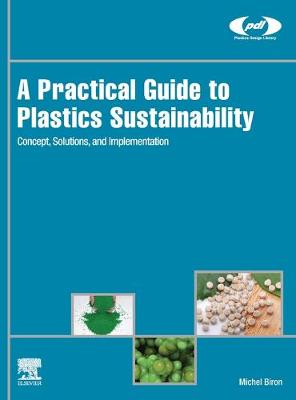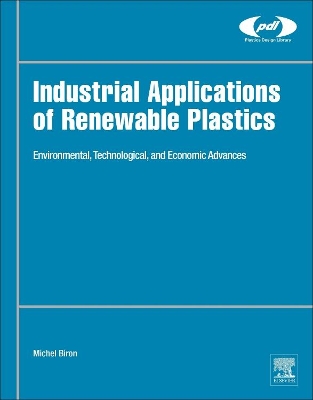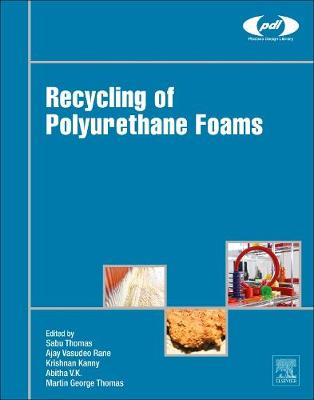Plastics Design Library
4 total works
Thermoplastics represent appx 90% by weight of all plastics consumed world-wide. We know them mainly in the form of polythenes, polyolefins, polystyrenes, nylons and acrylics. Under different heating conditions and by varying the composition of the plastic it is possible to make many different products with differing properties.
This is a decision-making tool and source-book of information for plastics users, providing detailed accounts of the materials used, their economics,the selection of appropriate materials, and the use of thermoplastic resins and their composites. By having this book to hand, you will use the right material in the right way to produce the right product.
This is a decision-making tool and source-book of information for plastics users, providing detailed accounts of the materials used, their economics,the selection of appropriate materials, and the use of thermoplastic resins and their composites. By having this book to hand, you will use the right material in the right way to produce the right product.
A Practical Guide to Plastics Sustainability: Concept, Solutions, and Implementation is a groundbreaking reference work offering a broad, detailed and highly practical vision of the complex concept of sustainability in plastics. The book's aim is to present a range of potential pathways towards more sustainable plastics parts and products, enabling the reader to further integrate the idea of sustainability into their design process. It begins by introducing the context and concept of sustainability, discussing perceptions, drivers of change, key factors, and environmental issues, before presenting a detailed outline of the current situation with types of plastics, processing, and opportunities for improved sustainability.
Subsequent chapters focus on the different possibilities for improved sustainability, offering a step-by-step technical approach to areas including design, properties, renewable plastics, and recycling and re-use. Each of these pillars are supported by data, examples, analysis and best practice guidance. Finally, the latest developments and future possibilities are considered.
Subsequent chapters focus on the different possibilities for improved sustainability, offering a step-by-step technical approach to areas including design, properties, renewable plastics, and recycling and re-use. Each of these pillars are supported by data, examples, analysis and best practice guidance. Finally, the latest developments and future possibilities are considered.
Industrial Applications of Renewable Plastics: Environmental, Technological, and Economic Advances provides practical information to help engineers and materials scientists deploy renewable plastics in the plastics market. It explores the uses, possibilities, and problems of renewable plastics and composites to assist in material selection and rejection. The designer's main problems are examined, along with basic reminders that deal with structures and processing methods that can help those who are generally familiar with metals understand the unique properties of plastic materials.
The book offers a candid overview of main issues, including conservation of fossil resources, geopolitical considerations, greenhouse effects, competition with food crops, deforestation, pollution, and disposal of renewable plastics. In addition, an overview of some tools related to sustainability (Life cycle assessments, CO2 emissions, carbon footprint, and more) is provided.
The book is an essential resource for engineers and materials scientists involved in material selection, design, manufacturing, molding, fabrication, and other links in the supply chain of plastics. The material contained is of great relevance to many major industries, including automotive and transport, packaging, aeronautics, shipbuilding, industrial and military equipment, electrical and electronics, energy, and more.
The book offers a candid overview of main issues, including conservation of fossil resources, geopolitical considerations, greenhouse effects, competition with food crops, deforestation, pollution, and disposal of renewable plastics. In addition, an overview of some tools related to sustainability (Life cycle assessments, CO2 emissions, carbon footprint, and more) is provided.
The book is an essential resource for engineers and materials scientists involved in material selection, design, manufacturing, molding, fabrication, and other links in the supply chain of plastics. The material contained is of great relevance to many major industries, including automotive and transport, packaging, aeronautics, shipbuilding, industrial and military equipment, electrical and electronics, energy, and more.
As new applications are developed and plastics replace traditional materials in a widening spectrum of existing applications, the potential personal injury, property damage, financial and legal consequences of failure can be high. However, nearly half of plastics failure can be traced back to the original specification and selection of the material.
This book gives engineers the data they need to make an informed decision about the materials they use in their products, imparting a thorough knowledge of the advantages and disadvantages of the various materials to choose from. The data also suggests other candidate materials which the reader may not have originally considered. More than 30,000 thermoplastics grades are grouped into circa. 300 subfamilies, within which over 20 properties are assessed.
The abundance or scarcity of a material and its cost are also often important deciding factors. In this book, an economical overview of the plastics industry helps clarify the actual consumption and costs of thermoplastics including bioplastic, and the relationship of cost vs. performance is also examined for each thermoplastic subfamily. Immediate and long-term common properties are reviewed, including mechanical behavior, impact, thermal properties, and many more. Environmental considerations are also covered, including ease of recycling and sustainability.
This book gives engineers the data they need to make an informed decision about the materials they use in their products, imparting a thorough knowledge of the advantages and disadvantages of the various materials to choose from. The data also suggests other candidate materials which the reader may not have originally considered. More than 30,000 thermoplastics grades are grouped into circa. 300 subfamilies, within which over 20 properties are assessed.
The abundance or scarcity of a material and its cost are also often important deciding factors. In this book, an economical overview of the plastics industry helps clarify the actual consumption and costs of thermoplastics including bioplastic, and the relationship of cost vs. performance is also examined for each thermoplastic subfamily. Immediate and long-term common properties are reviewed, including mechanical behavior, impact, thermal properties, and many more. Environmental considerations are also covered, including ease of recycling and sustainability.



